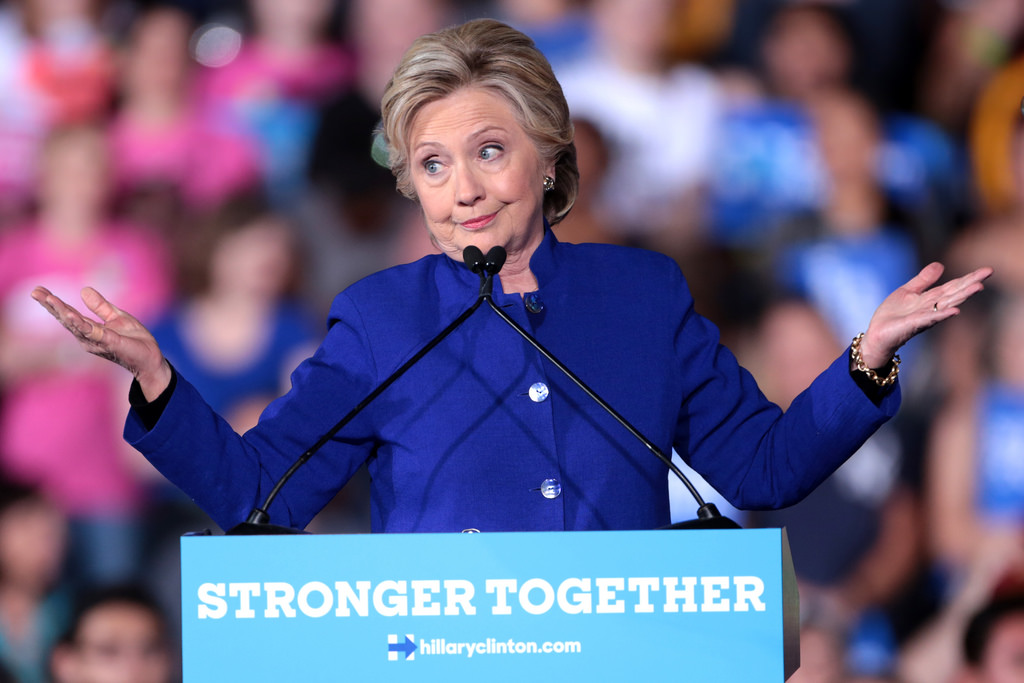In the long build up to the extraordinary US election, the candidates were scrutinized within an inch of their lives. From excavating decades-old television footage, to digging out private medical records, no stone was left unturned, no aspect of Clinton and Trump overlooked. What they wore was no exception. Particularly because Clinton was a female candidate, and because Trump looks so… extraordinary, the interplay between fashion and politics is ripe for analysis. Indeed, a strange parallel exists on our side of the Atlantic, with May and Corbyn sitting at opposite ends of the spectrum in terms of fashion sense as well as politics.
The present moment then is an obvious time to revisit the divisive issue of whether fashion has any place in politics. My short answer is yes—politics is all about conveying a message, and fashion is an obvious way to manipulate audience perception. Why else would a politician like George Osborne pay an ‘image advisor’ huge sums of money whilst implementing austerity measures? Throughout history, the aesthetics of politics have been used to reinforce authority, to create hope, and to incite revolution.
My favourite case of fashion being used as a political force is the Suffragette movement. The suffragists put great effort into crafting a respectable image, to avoid damaging their cause. Rather than challenging conventional codes of female dress, they conformed and embraced femininity, distancing the movement from the stereotype of the ‘ugly’, masculine, bluestocking woman. They exploited conventional fashion whilst committing to subversive action, wearing feminine blouses, silk gloves, and stylish hats topped off with ribbons and brooches in the movement’s three colours—white, purple, and green. This fledgling manifestation of the feminist movement is, in fashion terms, probably as far from Pussy Riot as it gets.
Fast forward to the present day, where, in a world post-World Wars, post-hippies, post-punk, and post-1980s power-dressing, fashion and politics have an uneasy coexistence. From the burkini controversy in France, to the delicate issue of whether to wear a Remembrance poppy, the politicisation of what we wear is inescapable. Many politicians and commentators rail against this. The Daily Mail obviously provides unfailing comment on what female politicians wear, with insightful headlines such as “Never mind Brexit, who won Legs-it!”, and “Remember the first rule of negotiation, Theresa…try not to reveal too much! PM opts for daring thigh-split skirt during meeting with EU chief.” Both of these moronic articles were, of course, accompanied by a sidebar of similarly leering headlines, a catalogue of celebrity nip-slips and ‘sizzling’ red carpet looks.
Critics of these sorts of articles say that they reduce women to objects of the male gaze, diverting attention from the real issues and detracting from the woman’s credibility. I fully agree with the argument in this case—I am infuriated as much as the next person that Theresa May’s Brexit negotiations are habitually prefigured by her legs. The headline makes fashion seem trivial precisely because it is cast as the main issue.
And fashion is not trivial. It can be about confidence, authority, empowerment, and femininity. Indeed, it is an arena where femininity and power are not mutually exclusive. Chanel sought to capture this spirit of feminine power by featuring a staged ‘riot’ at the end of its SS15 show. Models marched down a runway designed to look like a street, holding megaphones and signs emblazoned with “one is not born, but becomes a woman”, “make fashion not war”, and “boys should get pregnant too.” And yet, fashion writers invariably critiqued this stunt for being facetious, for parasitically latching onto the West’s piqued interest in ‘cool’ feminism in order to gain attention.
It seems that whenever designers make their shows too overtly political, shout their messages too loudly instead of weaving them into the fabric of their clothing, the public responds with hostility and shoves fashion back into the ‘trivial’ box. This was the case with McQueen’s AW 1995 show, titled “Highland Rape.” This show’s controversial attitude towards rape and the Scotland/England tensions still has resonance and power today, in a time when we like to believe we are not so easily shocked.
When fashion does politics, it often seeks to shock: when politics does fashion, it is, more often than not, to placate, to assert authority, and to smooth over cracks. Fashion in mainstream politics must be subtle, or else it seems to lose its power and alienate its audience. This is why wealthy women such as Kate Middleton, Hillary Clinton, and Michelle Obama are often anxious to make their statements in understated, even cheap, clothing (who can forget the media controversy over Theresa May’s £1000 leather trousers?).
Fashion and image help us to decode politics: they silently express who a politician is, and who they want to be. This is perhaps why, if you google ‘Hillary Clinton outfits’, you are presented with an array of articles on her fashion ‘strategy’ and how she calculated each look during the election campaign. If you google ‘Donald Trump outfits’, on the other hand, you get thousands of results on how to create the perfect DIY Trump Halloween costume. Fashion may be on the surface, but its workings spread deep below, into the depths of our emotion, powers, and private aspirations.



